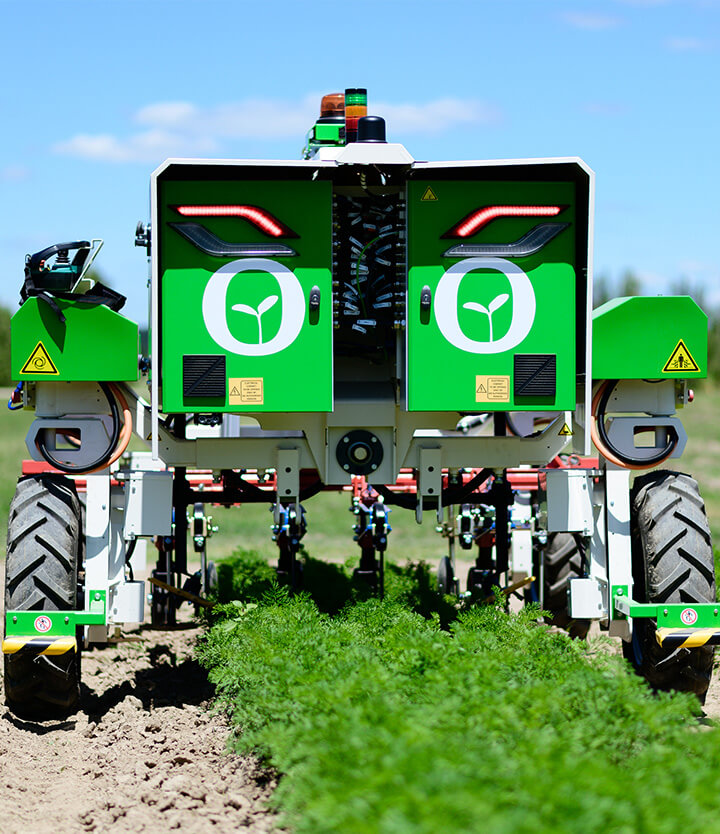Tillett and Hague’s camera guidance systems are now available on Dino. With an impressive track record of international sales spanning more than 10 years, the company has signed a partnership with Naïo Technologies. The result: more versatility and greater precision for Dino, the vegetable robot. We caught up with Tillett and Hague co-founder Nick Tillett and Naïo Technologies product manager Jean Inderchit to find out more about the short- and medium-term outlook.
A natural partnership
The two companies only teamed up less than two years ago, and yet the first cameras are already up and running on Dino robots. Interactions between the partners have been particularly productive of late. Face-to-face meetings – not always easy in the current context – and electronic communication have been the foundation of a relationship that is built to last. “The Tillett and Hague technology could give us a considerable edge, both technically and in terms of product development time savings,” explains Naïo Technologies product manager. The system detects crops in the row and sends a signal to position the tools on the tool holder, in order to weed the inter-row area without damaging the plants. For Nick Tillet, the system has the dual advantage of “protecting the vegetable plants and weeding them at the same time”.
Dino comes fitted with years of experience
The previous technology, developed by Naïo Technologies, was already efficient. But, as Jean Inderchit explained, “We wanted to benefit from Tillett and Hague’s experience in precision agriculture for vegetable production.” Indeed, Nick Tillett brought over 20 years’ experience to the table. “The biggest challenge was getting the two systems to communicate with each other to work together in the inter-row,” said Nick Tillett. The guidance system was designed to work on towed implements, not autonomous robots. Mounting the system on Dino required us to create a link between the camera and the action of moving the tools on the tool holder, “whereas in a conventional system, the driver manages the operations!” explained the Tillet and Hague co-founder.
Better precision means better weed control performance for Dino
“Our main goal was to rectify a few minor guidance faults and GPS track deviations in the old system. These were quickly corrected with the new equipment,” said the product manager.
To get to this point, extensive testing was carried out in collaboration with Tillett and Hague over the last year. Salad, celery, parsley, cabbage, fennel…testing was primarily conducted at the Naïo Centre in Angers, France. For expediency, the Spanish off-season was also used. Jean Inderchit added, “Our ‘Weeding as a Service’ robots in the US have already been fitted, and this year we plan to install the system in around 30 Dinos in France, both internally and for our customers.”
New features to be tested this year
Nick Tillett is excited about his firm’s first partnership with a robotics company. He is planning further tests for this year. Jean Inderchit would particularly like to work on inter-plant in-row weeding and on plant counting. “Farming data is a major issue and could help vegetable farmers better manage their stock of produce, by knowing in advance which plants have reached maturity. These features are already integrated into towed implements fitted with Tillet and Hague systems.” It seems that both partners have every reason to be confident about the medium-term outlook!





